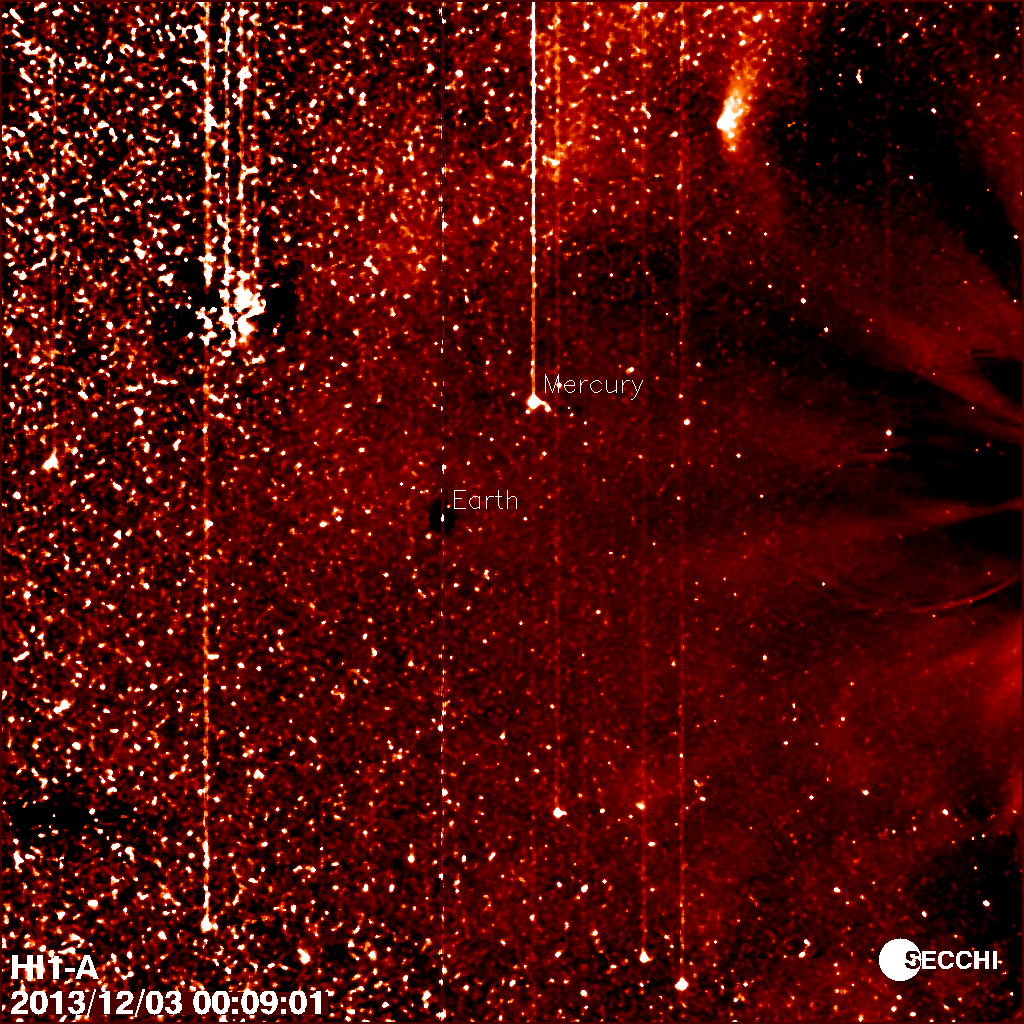Could Comet ISON possibly still be alive? The
latest high-resolution images available from the STEREO spacecraft
are still showing some remains of the comet, although each day seems to show less and less activity. "If anything of ISON's nucleus is left, it's an inactive husk of a nucleus now," Karl Battams from the
Comet ISON Observing Campaign
told Universe Today. "The comet remnant is fading fast in the STEREO data."
Casey Lisse, also from CIOC was a bit more hopeful. In a
web posting
yesterday (Dec. 4) he said, "At this time, scientists are not sure how much of the comet survived intact. We may be seeing emission from rubble and debris in the comet's trail, along its orbit, or we may be seeing the resumption of cometary activity from a sizable nucleus-sized chunk of ISON."
[caption id="attachment_106978" align="aligncenter" width="580"]
Comet ISON, seen from the International Space Station over Ontario, on Nov 23, 2013 at about 85-mm, 10:08 UTC. Credit: NASA, via
Peter Caltner
. [/caption]
Lisse added that most astronomers agree that Comet ISON was destroyed (with greater than 90% probability of this having occurred), leaving behind small (less than 10 m radius from the original 1 km nucleus) pieces of rubble, but there could be fragments 100 meters radius or larger. This would be big enough for astronomers to study but probably not big enough to provide a nice sky display later in December that everyone was hoping for.
Here's the schedule of events for spacecraft to study whatever is left of Comet ISON, according to Lisse:
- NASA will monitor the comet for the next several weeks. If there is nothing sizable and stable left, it will dissipate and disappear in this time, as already emitted dust leaves the vicinity. If there is still a central source of emission, even if it is very much smaller, we will see a new, much fainter coma and tail form, which currently may be overwhelmed by the dust emitted from before the disruption event.
- NASA's STEREO spacecraft will be using their cameras to search for bright fragments throughout the week, while the NASA Infrared Telescope Facility (IRTF) in Honolulu, Hawaii will use its 3m wide telescope to detect the comet spectroscopically, the same way it did on ISON's inbound journey. Radio telescopes around the world will also be able to tell us more about what has happened. NASA's recently launched MAVEN spacecraft may try to observe ISON next week. By mid- to late-December NASA's Hubble and Chandra observatories will be performing deep outer space searches for any remnants of the comet. Spitzer will also look for ISON in early 2014.
If a fragment that acts like a comet is detected, but at a much reduced level, it may be hard to see it from the Earth at the time of its closest approach on December 26, 2013.
You can find out the latest on what is going on with ISON tomorrow, Dec. 6, 2013 as the CIOC is holding a post-perihelion workshop to discuss the status of the comet. The morning sessions, live from theh Applied Physics Lab at Johns Hopkins University will be webcast from approximately 8:30 am EST to 11:30 am EST, will be available for viewing in the player below:
Watch
live streaming video
from
cometison
at livestream.com
More details on the meeting are available here
. So far, 12 spacecraft and the International Space Station have observed and detected Comet ISON on its multi-million year journey from the Oort Cloud to the solar corona. You can find out more about the planned Hubble observations
here.
 Universe Today
Universe Today
